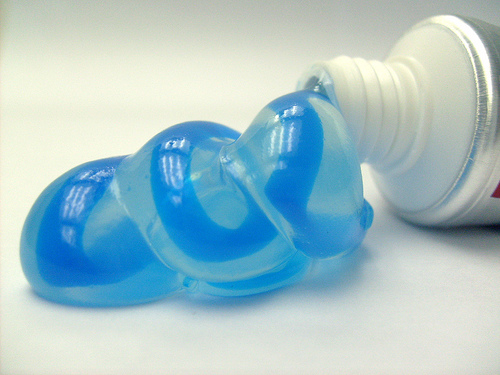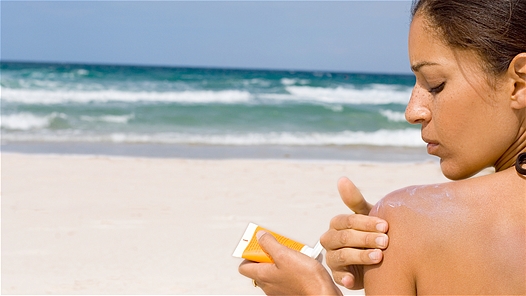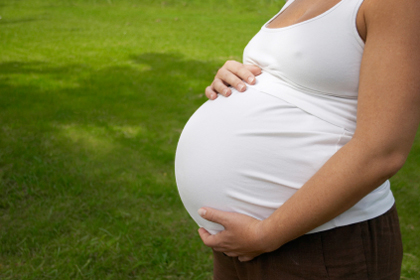We all use personal care products and/or cosmetics to look, smell, and feel better.
Unfortunately, most of them don’t make us healthier. Whether they pollute the air, water, or our bodies, many ingredients in personal care products can cause serious problems.
(For instance, see All About Environmental Toxins to learn more about endocrine disruptors — chemicals that cause hormonal problems.)
Since few of these chemical ingredients are regulated, even if you want to make healthy choices, you may not know how. Knowing what’s actually in your toothpaste, soap, or lipstick can also be a challenge.
Hopefully this article will help. In it, we’ll discuss the most common chemicals in personal care products, and how you can avoid the ones that might cause harm for you or your family.
What’s in your bathroom cabinet?
We use all kinds of personal care and cosmetic products every day. This includes things like:
- shampoo and conditioner
- soap; shower gel/body wash; bath salts and oils
- perfume; cologne; aftershave and other scents
- deodorants and antiperspirants
- lipsticks and lip balms
- hair styling products; hair colour
- makeup / cosmetics (foundation, eyeshadow, mascara, etc.)
- baby powder; foot powder
- hand wipes and hand sanitizers
- sunscreen and self-tanners
- shaving creams; hair removal products
- facial cleansers, creams, and toners; acne treatment products
- toothpaste; mouthwash; dental floss
- nail polish; polish removers; other nail products
- contact lens / eyeglass cleaners and solutions
- facial and toilet tissue
- feminine hygiene products
- moisturizers
Then, of course, there is a host of household cleaners and other chemicals that we often inhale, ingest, or touch.
A stroll down the aisles of your local drugstore will reveal that there are literally hundreds of personal care products that we simply take for granted are safe.
They’re not necessarily so.
Common personal care chemicals
Here’s just a small sample of the potentially harmful chemicals that lurk in your personal care products.
Triclosan
Triclosan is an antibacterial agent found in some toothpastes and in antibacterial soaps.
It has long-lasting toxic effects on aquatic life. Among other endocrine problems, triclosan can decrease thyroid function. Canada and Japan restrict the use of triclosan as a cosmetic ingredient.
Most troubling: Triclosan itself may create resistant bacteria — in other words, worsening the very problem it tries to solve.

Fragrance
Fragrance is found in deodorants, face washes, shampoos, body washes, and sunscreens.
The term “fragrance” may include any of 3,163 different chemicals. The Environmental Working Group has found that on average, 14 hidden compounds make up the “fragrance” ingredient on the label.
Fragrance mixtures have been associated with allergies, dermatitis, respiratory distress, and potential effects on the reproductive system, such as low sperm count.
Toluene
Toluene is a common solvent used in paint thinners, and can also be found in moisturizing creams and nail polishes.
It is a potent neurotoxin that impairs breathing and causes nausea. Exposure may cause developmental damage to a developing fetus. Toluene is also associated with immune system disruption and cancer.
Parabens
Parabens are a class of compounds use to preserve and scent many products. Parabens mimic estrogen and are likely endocrine disruptors.
Formaldehyde releasers
Formaldehyde releasers are a class of antimicrobial preservatives (such as DMDM hydantoin and Quaternium-15) used in about 20% of personal care products in the US. They are toxic to the immune system and skin and are highly allergenic. Japan restricts their use.
Oxybenzone
Oxybenzone is used in over half of sunscreens as a UV light absorber. It may actually cause photoallergic reactions. It may also be an endocrine disruptor.
According to the Centers for Disease Control, oxybenzone can be found in over 97% of Americans. Japan restricts the use of oxybenzone in personal care products.

How do these chemicals enter the body?
We’re exposed to chemicals from personal care products in many ways. For example:
- We can breathe them in via sprays and powders.
- We can swallow them unintentionally by getting them on our lips.
- We can absorb them through the skin and mucous membranes.
Many products contain compounds that enhance penetration and drive ingredients deeper into the skin, increasing absorption and exposure.
(For a fun — and somewhat disturbing — read on this subject, check out Slow Death By Rubber Duck, in which two researchers experiment on themselves to discover how chemically saturated our bodies have become.)
What does the government say?
We seldom think about the ingredients in personal care products, often assuming that if they’re allowed to be sold then they must be safe. Unfortunately, this is not necessarily true.
In fact, except for colour additives and a few prohibited substances, cosmetics companies can use any ingredient or raw material they want in their products, without government review or approval.
That’s right. The chemical industry is largely unregulated.
There are over 80,000 chemicals in use in the US, and the vast majority of them have never been assessed for safety by federal regulators.
In fact in its more than 30-year history, the Cosmetic Ingredient Review (the cosmetic industry’s safety panel) has assessed fewer than 20% of cosmetics ingredients and found only 11 ingredients or chemical groups to be unsafe.
“There are too many chemicals and not enough data,” Kevin Crofton, EPA research toxicologist argues. “There are literally thousands and thousands of chemicals in use for which we really don’t have much information at all.”
Terms like “hypoallergenic” or “gentle” don’t necessarily mean a product is safer, or even that it is gentle and non-allergenic. A company can use a claim like “hypoallergenic” to mean anything or nothing at all.
The Environmental Working Group conducted an assessment of over 1700 body care products and found that 81% of those marked “hypoallergenic” or “gentle” contained allergens or skin and eye irritants!
In the US, more than 500 products contain ingredients that have been banned in cosmetics in Japan, Canada, or the European Union.
The FDA also has little authority over cosmetic companies, cannot recall harmful cosmetics, and relies on companies to report injuries from their products a voluntary basis.
Sobering stuff.
Timing matters
“The dose makes the poison” is a well-known principle in risk assessment. However, new research suggests that “the timing affects the dose.”
This reflects our growing understanding that exposure to many pollutants, including those from personal care products, is riskier during fetal development and in early childhood, when it can disturb the growing brain and nervous system, setting the stage for problems in childhood and later life.
This isn’t to say that these chemicals are perfectly safe for fully developed adults. It simply indicates that exposure as a developing fetus or young child may be the most damaging. Choose products carefully for yourself and especially your children.

Natural and safer alternatives
Good news: There are safer products available.
Start by reading product labels. Get to know the brands that you can trust.
One tip is to look in camping/outdoor stores — they often sell products such as unscented glycerin soaps and shampoos that are designed to break down quickly and harm the environment (and, ideally, our bodies) less.
Safer products don’t have to be expensive, either. You can often buy safer products (such as plain glycerin liquid soap or eco-friendly washing powder) in bulk.
Or you can make many common personal care products at home — often for much cheaper than a commercial product! For example:
- Use olive, almond, avocado, or another mild oil for removing makeup.
- Use sea salt or brown sugar as a body scrub.
- Use extra-virgin or virgin coconut oil as a moisturizer and lip balm. (Smells great too!)
- Save yourself the cost of a pricey acid-based facial toner: Use plain yogurt mixed with lemon juice as a cleanser. Or just cut a lemon in half and rub the pulp on your skin. Then rinse. The fruit and lactic acids work the same way, and the Lactobacillus bacteria in the yogurt helps skin problems. (Other fruits work too — try a shmear of pineapple, which also contains exfoliating bromelain; or avocado pulp, which moisturizes.)
- Treat acne with egg yolk (the vitamin A that makes the yolks yellow is also the active ingredient). Leave it on for a few minutes, rinse, and then follow up with a spot of tea tree or lavender oil. (Egg on your face can sometimes be a good thing!)
- Rinse hair with apple cider vinegar instead of conditioner — the cider vinegar will detangle your hair, get rid of crud and residue, and leave your mane shiny. Pour the cider in, massage it in, and then rinse it out with water.
- If you run out of toothpaste during one frantic morning, no problem: stick your wet toothbrush into some baking soda instead. A baking soda paste will not only scrub your teeth, it’ll leave your breath fresh after you rinse, too! If you want to get extra-fancy, add a drop or two of peppermint oil to the paste — mint oil has antibacterial properties.
Many blogs (such as Humblebee&Me, Frugal By Choice, Cheap By Necessity, or Ecoholic) offer recipes for DIY personal care products, or suggest safer alternatives.
Because we use these types of products so often, even switching out one or two items will really add up in the long run.
Summary and recommendations
The take home point? Be aware of the cosmetic products you and your family are using.
There are many potentially dangerous chemicals and products, subject to very little regulation and review. Do your own research to protect yourself and your loved ones.
However, you don’t have to trash every item you’re currently using and overturn your entire bathroom overnight! Instead, you want to simply be aware, educate yourself, and make informed decisions to protect yourself and your loved ones.
A better strategy would be:
- Make changes progressively — one product at a time.
- Change by attrition: When it’s time to throw out an old product, make sure the new one you replace it with is a safer version.
- Use the Environmental Working Group’s Skin Deep Cosmetic Database to educate yourself on safer products and ingredients and do not rely on label claims as they are often false and misleading.
- Think about the cumulative load of all the stuff you use. You don’t have to throw out every product you own, or give up your favorite French perfume. Small changes will add up — so start with one or two adjustments, and go from there.
You don’t have to be a fanatic about eliminating every trace of each chemical mentioned in this article. You’re not trying to be perfect or purify your body completely. (But if you ever figure out how to do that, let us know.)
Here are a few other easy-to-implement tips:
- Use fewer products — try just one type of moisturizer, for example, instead of having body lotion, hand lotion, face cream, under-eye moisturizer, etc.
- Read labels. Get to know what’s in the products you’re buying. Check the manufacturers’ websites too.
- If you’re spraying stuff, don’t breathe it in. And/or have good ventilation. (For more on this, see All About Indoor Air Pollution.)
- Choose unscented versions of your usual products. (This includes cleaners, laundry detergents, fabric softeners, etc.) If you absolutely must have some fragrance, try some essential oils instead.
- Look in the baby products aisle. Sometimes (though not always) these products will have fewer chemicals, or offer unscented versions.
- Don’t try to kill bacteria with your products unless you absolutely, positively have to. Plain old soap and water will do just fine for washing away daily-life bacteria. And your mouth has its own natural microbial ecosystem. Don’t blast it with alcohol mouthwash or triclosan toothpaste.
- Get involved in local and national efforts to modernize chemical safety testing to keep harmful chemicals out of products in the first place.
Eat, move, and live… better.©
Yep, we know… the health and fitness world can sometimes be a confusing place. But it doesn’t have to be.
Let us help you make sense of it all with this free special report.
In it you’ll learn the best eating, exercise, and lifestyle strategies – unique and personal – for you.
Click here to download the special report, for free.
References
Click here to view the information sources referenced in this article.




Share